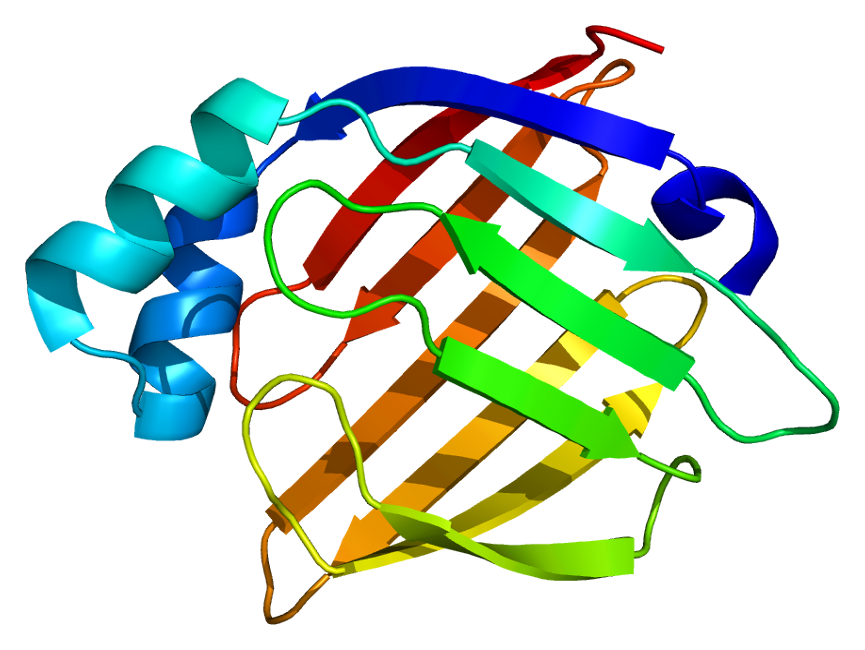FABP on:
[Wikipedia]
[Google]
[Amazon]
 The fatty-acid-binding proteins (FABPs) are a family of transport proteins for fatty acids and other lipophilic substances such as eicosanoids and
The fatty-acid-binding proteins (FABPs) are a family of transport proteins for fatty acids and other lipophilic substances such as eicosanoids and
 The fatty-acid-binding proteins (FABPs) are a family of transport proteins for fatty acids and other lipophilic substances such as eicosanoids and
The fatty-acid-binding proteins (FABPs) are a family of transport proteins for fatty acids and other lipophilic substances such as eicosanoids and retinoid
The retinoids are a class of chemical compounds that are vitamers of vitamin A or are chemically related to it. Retinoids have found use in medicine where they regulate epithelial cell growth.
Retinoids have many important functions throughout t ...
s. These proteins are thought to facilitate the transfer of fatty acids between extra- and intracellular membranes
A membrane is a selective barrier; it allows some things to pass through but stops others. Such things may be molecules, ions, or other small particles. Membranes can be generally classified into synthetic membranes and biological membranes. Bi ...
. Some family members are also believed to transport lipophilic molecules from outer cell membrane to certain intracellular receptors such as PPAR
In the field of molecular biology, the peroxisome proliferator-activated receptors (PPARs) are a group of nuclear receptor proteins that function as transcription factors regulating the expression of genes. PPARs play essential roles in the reg ...
. The FABPs are intracellular carriers that “solubilize
Micellar solubilization (solubilization) is the process of incorporating the solubilizate (the component that undergoes solublization) into or onto micelles. Solublization may occur in a system consisting of a solvent, an association colloid (a c ...
” the endocannabinoid anandamide (AEA), transporting AEA to the breakdown by FAAH
Fatty acid amide hydrolase or FAAH (, oleamide hydrolase, anandamide amidohydrolase) is a member of the serine hydrolase family of enzymes. It was first shown to break down anandamide in 1993. In humans, it is encoded by the gene ''FAAH''.;
Fun ...
, and compounds that bind to FABPs block AEA breakdown, raising its level. The cannabinoids ( THC and CBD) are also discovered to bind human FABPs (1, 3, 5, and 7) that function as intracellular carriers, as THC and CBD inhibit the cellular uptake and catabolism
Catabolism () is the set of metabolic pathways that breaks down molecules into smaller units that are either oxidized to release energy or used in other anabolic reactions. Catabolism breaks down large molecules (such as polysaccharides, lipids, ...
of AEA by targeting FABPs. Competition for FABPs may in part or wholly explain the increased circulating levels of endocannabinoids reported after consumption of cannabinoids. Levels of fatty-acid-binding protein have been shown to decline with ageing
Ageing ( BE) or aging ( AE) is the process of becoming older. The term refers mainly to humans, many other animals, and fungi, whereas for example, bacteria, perennial plants and some simple animals are potentially biologically immortal. In ...
in the mouse brain, possibly contributing to age-associated decline in synaptic activity.
Family members
Members of this family include:Pseudogenes
References
External links
* Water-soluble transporters {{protein-stub